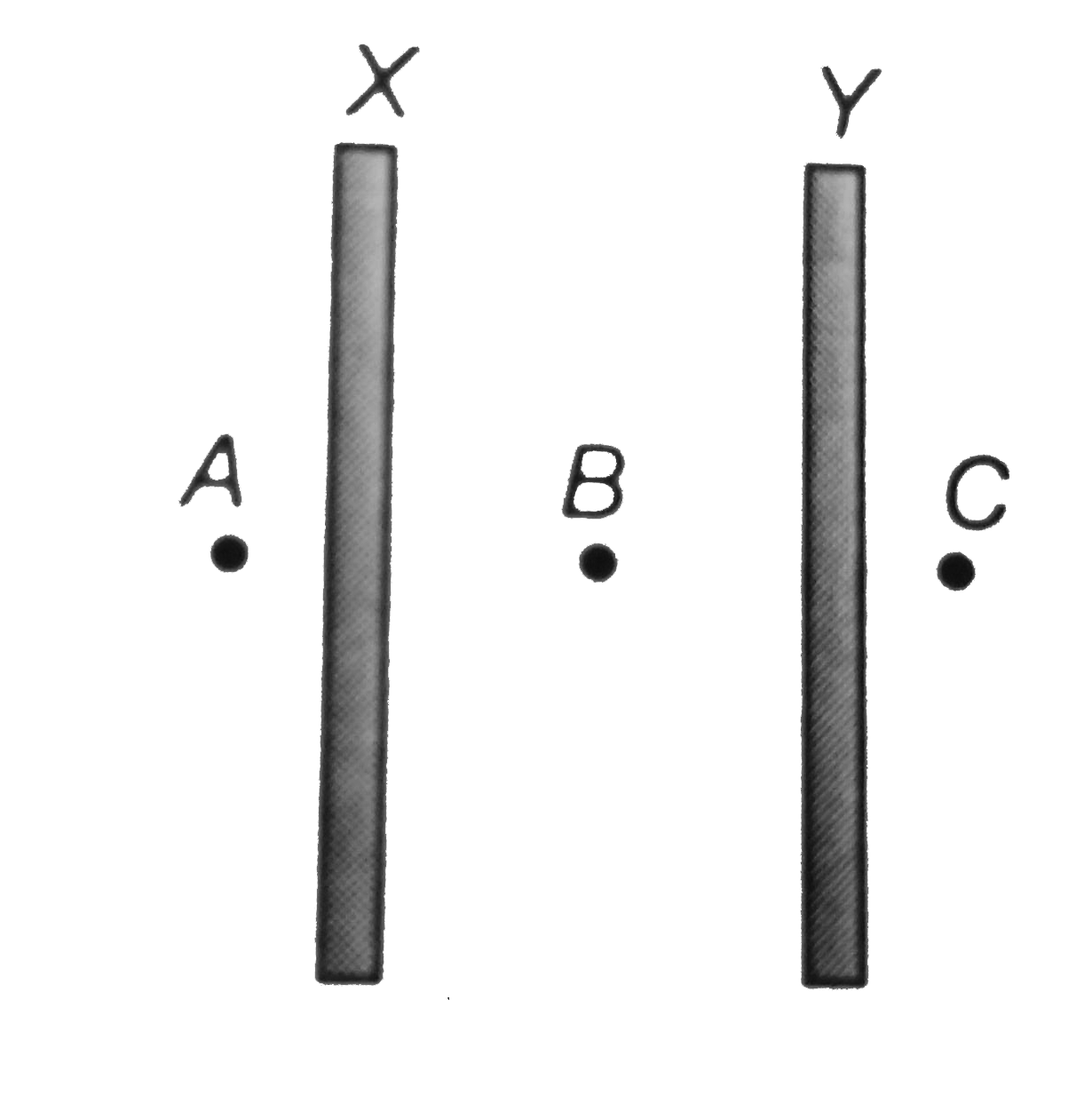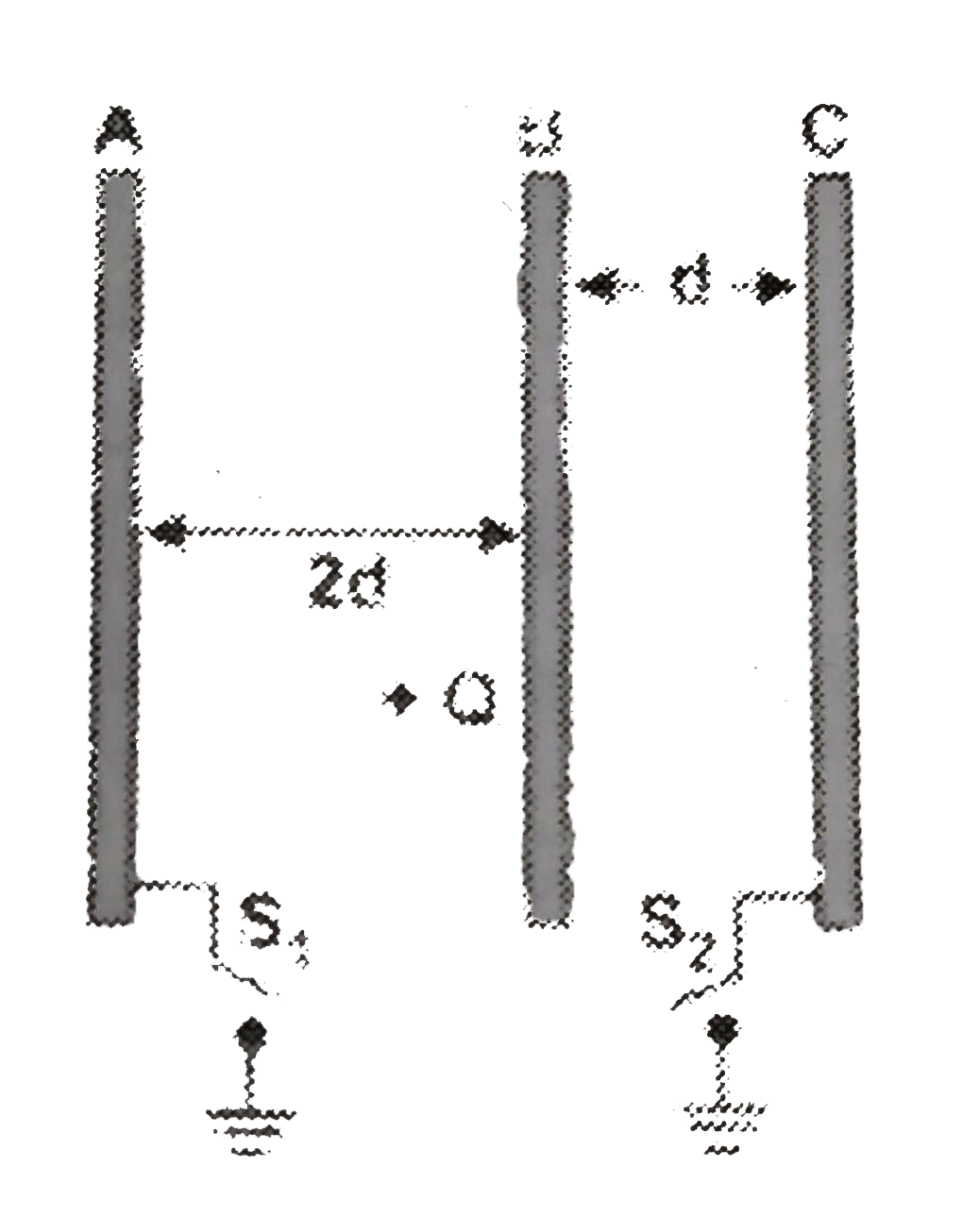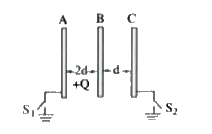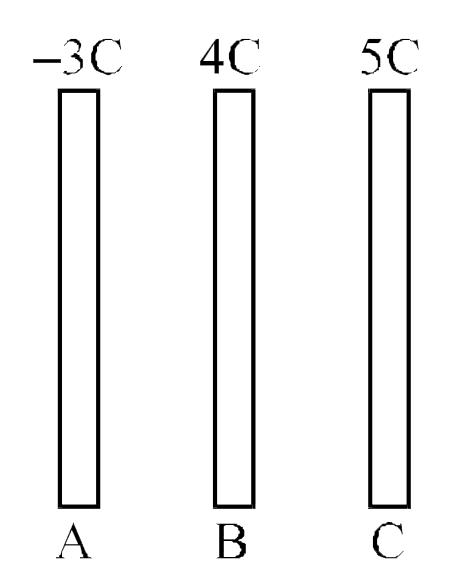
A,B and C are three large, parallel conducting plates, placed horizontally. A and C are rigidly fixed and earthed. B is given some charge. Under electrostatic and gravitational forces, B may be
in equilibrium midway between A and C
in equilibrium if it is close to A than to C
in equilibrium if it is closer to C than to A
B can never be the stable equilibrium.
The correct Answer is:B, D
Topper's Solved these Questions
Similar Questions
A, B, and C are three large, parallel conducting plates, placed horizontally. A and C are rightly fixed and earthed in figure . B is given some charge . Under the electorstatic and gravitational forces, B may be

View SolutionX and Y are large, parallel conducting plates close to each other. Each face has an area A. X is given a charge Q. Y is without any charge. Points A,B and C are as shown in the figure.

View Solution
Knowledge Check
A, B, and C are three large, parallel conducting plates, placed horizontally. A and C are rightly fixed and earthed in figure . B is given some charge . Under the electrostatic and gravitational forces, B may be
 Ain equilibrium if it is closer to A than to CBin equilibrium midway between A and CCB can never be in stable equilibrium .Din equilibrium if it is closer to C than to A.
Ain equilibrium if it is closer to A than to CBin equilibrium midway between A and CCB can never be in stable equilibrium .Din equilibrium if it is closer to C than to A.X and Y are large, parallel conducting plates close to each other. Each face has an area A. X is given a charge Q. Y is without any charge. Points A,B and C are as shown in the figure.
 AThe field at B is Q2εABThe field at B is Qε0ACThe fiels at A,B and C are of the same magnitudeDThe fieds at A and C are of the same magnitude, but in opposite directions
AThe field at B is Q2εABThe field at B is Qε0ACThe fiels at A,B and C are of the same magnitudeDThe fieds at A and C are of the same magnitude, but in opposite directionsThree identical parallel conducting plates A, B and C are placed as shown. Switches S1andS2 are open, and can connect A and C to earth when closed. +Q charges is given to B.
 AIf S1is closed with S2 open, a charge of amount Q will pass through S1.BIf instead S2 were closed with S1 open, a charge of amount Q will pass through S2.CIf S1andS2 are closed together, a charge of amount 2Q/3 will pass through S2.DIf S1andS2 are closed together, a charge of amount 2Q/3 will pass through S1, and a charge of amount Q/3 will pass through S2.
AIf S1is closed with S2 open, a charge of amount Q will pass through S1.BIf instead S2 were closed with S1 open, a charge of amount Q will pass through S2.CIf S1andS2 are closed together, a charge of amount 2Q/3 will pass through S2.DIf S1andS2 are closed together, a charge of amount 2Q/3 will pass through S1, and a charge of amount Q/3 will pass through S2.
Three identical parallel conducting plates A, B and C are placed as shown. Switches S1andS2 are open, and can connect A and C to earth when closed. +Q charges is given to B.

View SolutionThree identical parallel conducting plates A, B and C are placed as shown. Switches S1andS2 are opened and connect A and C to earth when closed. +Q charge is given to B.

View SolutionTwo conducting plates A and B are placed parallel to each other. A is given a charge. Q1 and B a charge Q2. Find the distribution of charges on the four surface.
View SolutionTwo conducting plates A and B are placed parallel to each other. A is given a charge. Q1 and B a charge Q2. Find the distribution of charges on the four surface.
View SolutionThree large plates A, B and C are placed parallel to each other and charges are given as shown. The charge that appears on the left surface of plate B is

View Solution
